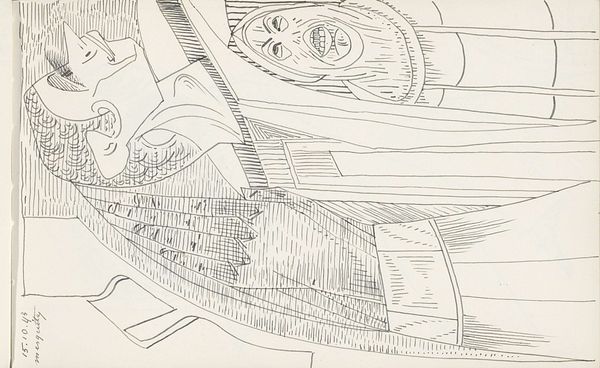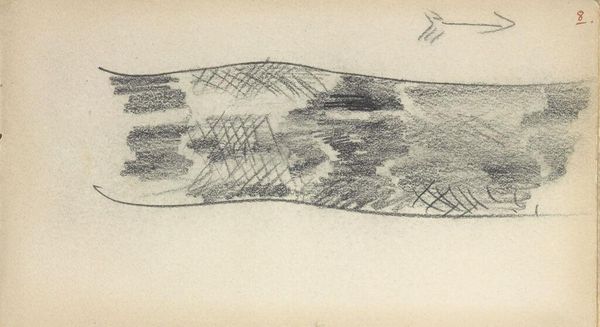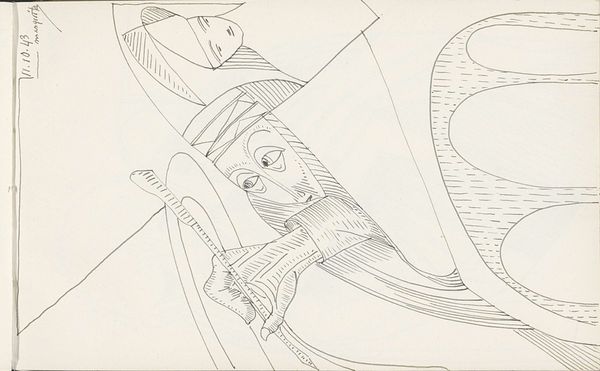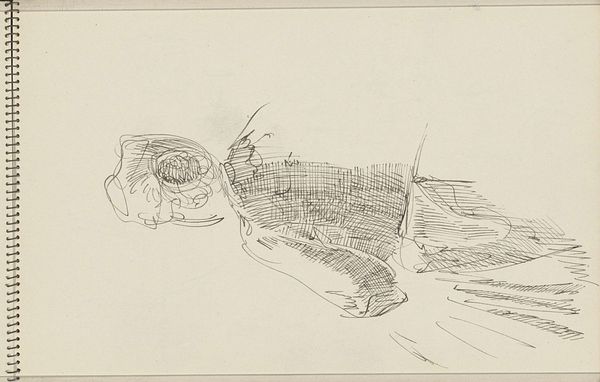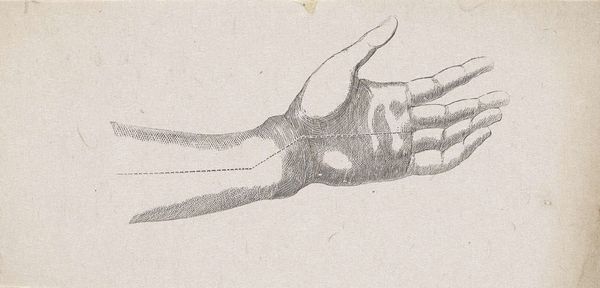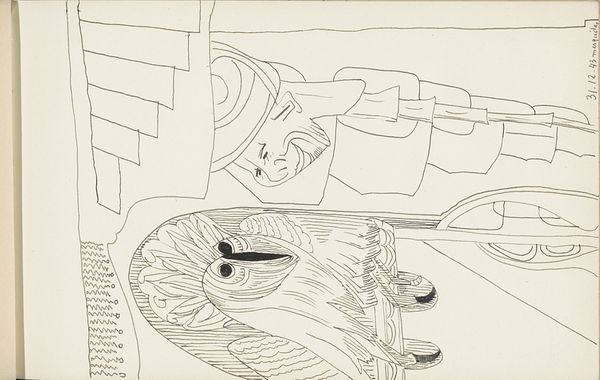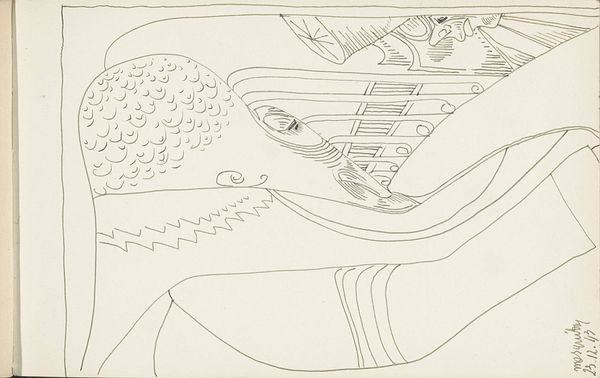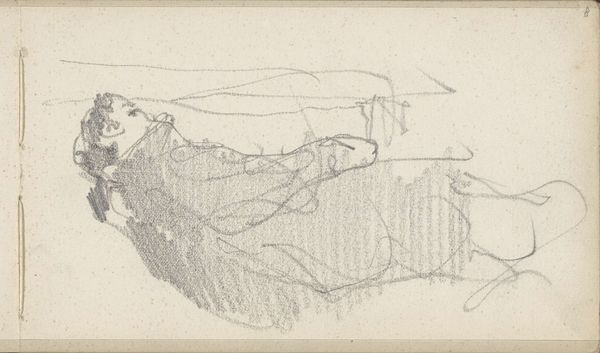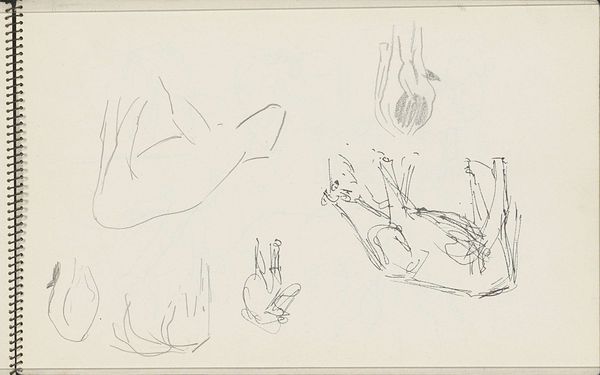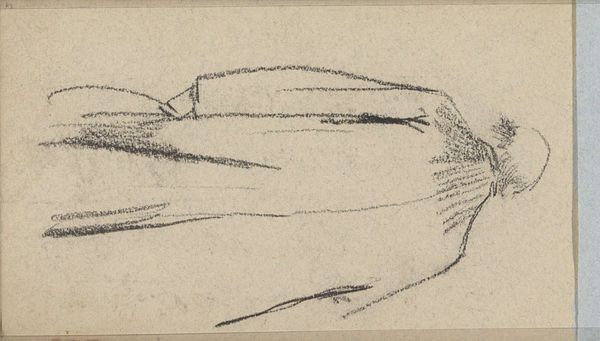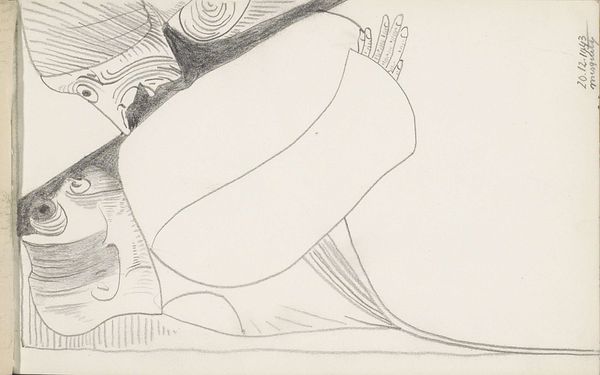
Vrouw met een paraplu en een man met een hoge hoed, baard en wandelstok Possibly 1943
0:00
0:00
drawing, ink, pen
#
drawing
#
comic strip sketch
#
quirky sketch
#
figuration
#
personal sketchbook
#
linework heavy
#
ink
#
idea generation sketch
#
sketchwork
#
ink drawing experimentation
#
pen-ink sketch
#
sketchbook drawing
#
pen
#
modernism
#
initial sketch
Copyright: Rijks Museum: Open Domain
Curator: Take a moment with "Vrouw met een paraplu en een man met een hoge hoed, baard en wandelstok"—"Woman with an umbrella and a man with a top hat, beard and walking stick"—a pen and ink drawing by Samuel Jessurun de Mesquita, potentially created in 1943. What strikes you about it initially? Editor: It’s eerie, even unsettling. The figures seem disjointed, almost floating. Is this dreamlike, or is there a darker current running beneath the surface? Curator: De Mesquita had a keen eye for the grotesque and surreal. The man with the top hat, for instance – notice the exaggerated lines around his eyes and beard. These details, repeated in the woman’s face beneath the umbrella, create a caricature-like quality. These drawings capture something about human nature that goes beyond simple representation. Editor: Yes, those stark lines. Given the possible date of 1943, and knowing de Mesquita was Jewish and ultimately perished in Auschwitz, it’s impossible not to view this work through the lens of persecution and dehumanization. Perhaps the exaggerated features are less about mere caricature and more about the artist grappling with how society can twist and distort human beings. Curator: It’s compelling how you bring that context to the imagery. I agree the grotesque isn't just about mocking appearances; it can represent deeper psychological fears and societal anxieties. De Mesquita may have been exploring the breakdown of civility. There are so many symbols—the top hat representing bourgeoise complacency. And the umbrella representing something that cannot protect. Editor: It feels less like social commentary and more like a visceral response. I’m drawn to how de Mesquita employs the symbolism of the umbrella—often viewed as an instrument of shielding from life's troubles. But now, perhaps, shielding some sort of social terror as the horrors of the time began to take shape in Europe. Curator: Indeed. The work leaves us pondering how art can both reflect and refract the horrors of its time. Editor: Absolutely. It’s a stark reminder of how individual expression can provide insights into some of humanity’s darkest periods.
Comments
No comments
Be the first to comment and join the conversation on the ultimate creative platform.
